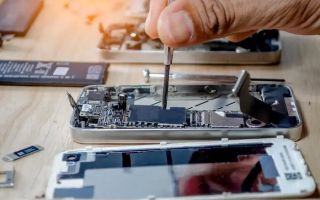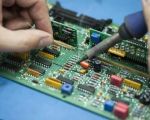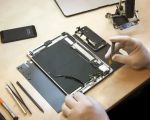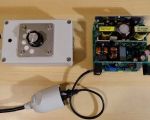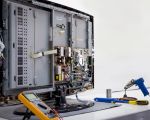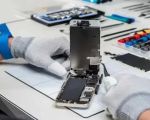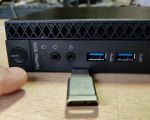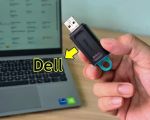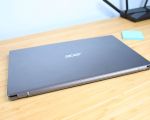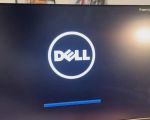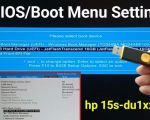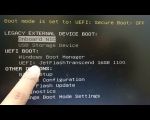How to Fix USB Bootable Media Errors
- 1. Understanding USB Bootable Media Errors
- 2. Common Causes of USB Bootable Media Errors
- 3. Troubleshooting USB Bootable Media Errors
- 4. Preventing Future USB Bootable Media Errors
1. Understanding USB Bootable Media Errors
USB bootable media errors are common issues that can prevent your computer from booting properly from a USB drive. These errors can occur for various reasons, such as corrupted files, incorrect formatting, or issues with the boot sequence in the BIOS settings. Understanding these errors and how to resolve them is crucial, especially when you rely on USB bootable media for tasks such as installing an operating system or running diagnostics.
When you attempt to boot from a USB drive and the system fails to recognize it, it could be due to a range of problems. This article will explore common causes of these errors and provide solutions to fix them.
2. Common Causes of USB Bootable Media Errors
Several factors can lead to USB bootable media errors. Below are the most common causes that can interfere with the process:
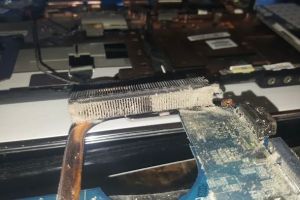
PC Solutions
6245 N 35th Ave #6, Phoenix, AZ 85017, USA
1. Incorrect USB Drive Formatting
One of the most common causes of bootable media errors is improper USB drive formatting. The USB drive must be formatted with the correct file system (such as FAT32 or NTFS) and partitioning style (MBR or GPT) to be recognized as bootable. Failure to do so can prevent your system from booting from the USB drive, even if the media contains the correct installation files.
2. Corrupted Bootable Files
If the files on the USB drive are corrupted, the system will not be able to boot from the device. This can happen if the USB drive was not properly created, or if there were errors during the copying of files. You should ensure the bootable image or operating system files on the USB are intact before attempting to boot from it.
3. BIOS Settings and Boot Order
The BIOS settings on your computer control the boot sequence, and if the USB drive is not set as the primary boot device, the system will not attempt to boot from it. Additionally, some systems may require you to enable USB booting in the BIOS setup. If this step is missed, your computer may ignore the USB drive altogether, leading to errors when attempting to boot from it.
3. Troubleshooting USB Bootable Media Errors
Once you understand the potential causes, the next step is to troubleshoot and fix the errors. Here are some effective methods to resolve USB bootable media errors:
1. Reformat the USB Drive and Create a New Bootable Media
The first step in troubleshooting a USB bootable media error is to reformat the USB drive. Use a reliable tool, such as Rufus or the Windows Media Creation Tool, to format the drive and recreate the bootable media. Make sure to select the correct file system and partition scheme for your system. This should resolve issues related to incorrect formatting.
2. Check the Bootable Files for Integrity
Ensure that the files on your USB drive are not corrupted. If you're using an ISO file to create the bootable media, verify the integrity of the ISO using tools like MD5 or SHA256 hash checks. If the file is corrupt, download it again from a trusted source and recreate the bootable media.
3. Modify BIOS Settings and Boot Sequence
If your system is not detecting the USB as a bootable device, check your BIOS settings. Restart the computer and enter the BIOS setup by pressing the appropriate key (usually F2, F12, ESC, or DEL). In the BIOS menu, ensure that the boot order is set to prioritize USB drives over other devices, such as the hard drive. Also, check that USB booting is enabled.
4. Preventing Future USB Bootable Media Errors
To avoid future USB bootable media errors, it's essential to follow a few simple practices:
1. Use Reliable Tools for Creating Bootable Media
Always use trusted software to create bootable USB drives. Tools like Rufus, the Windows Media Creation Tool, and UNetbootin are reliable and help ensure that the USB drive is formatted and set up correctly. Using poorly designed or unreliable tools can lead to issues during the boot process.
2. Keep Backup Copies of Bootable Media
It's always a good idea to keep backup copies of your bootable media, especially when dealing with important tasks like operating system installations or system recovery. Having multiple copies on different USB drives ensures you always have a reliable source in case of errors.
3. Regularly Check and Update BIOS Firmware
Occasionally, BIOS updates are released to improve hardware compatibility and system stability. Check your computer's manufacturer's website for BIOS updates to ensure the best compatibility with USB booting. An outdated BIOS may cause booting issues with modern USB drives.
OLD Keywords: fix USB bootable media errors, USB drive formatting issues, USB booting problems, bootable media troubleshooting
SEO Title: How to Fix USB Bootable Media Errors – Troubleshooting and Solutions
SEO Keywords: fix USB bootable media errors, USB booting problems, USB drive formatting issues, bootable media troubleshooting
SEO Description: Learn how to fix USB bootable media errors with this comprehensive guide. Discover troubleshooting tips, common causes, and how to prevent future booting issues on your USB drive.




